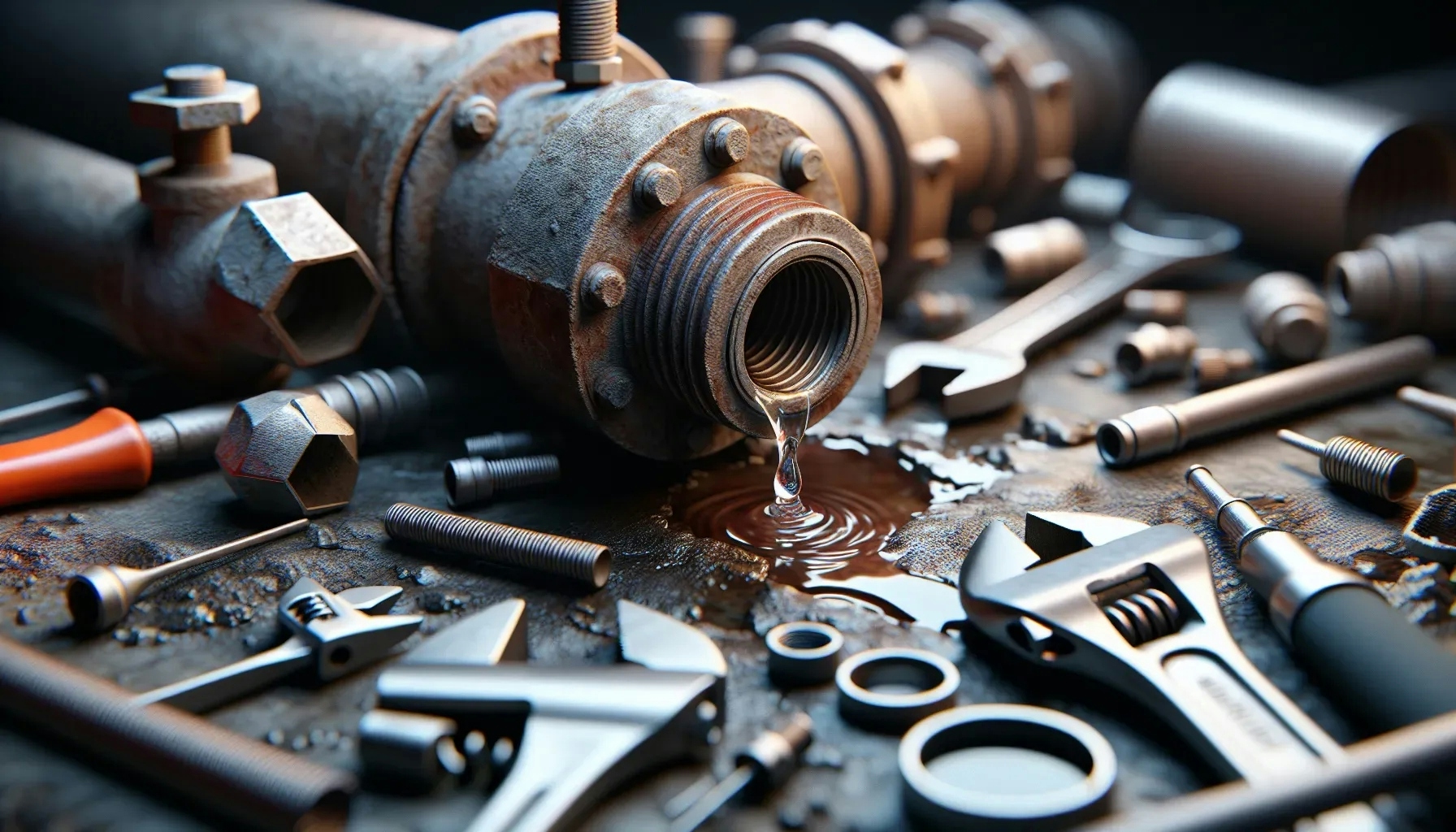What Plumbing Issues Are Commonly Overlooked by Homeowners?
Plumbing problems can often be a silent menace, lurking unnoticed until they demand urgent attention. A Real Estate Sales Representative and Montreal Division Manager warns against the perils of ignoring silent leaks, while our collection of insights, including additional answers from various contributors, highlights the spectrum of issues that homeowners commonly overlook. From the immediate need to fix drippy faucets to the importance of winterizing outdoor faucets, here are seven key plumbing concerns that should be on every homeowner's radar.
- Don't Ignore Silent Leaks
- Address Slow Drainage Issues
- Investigate Slow Drainage Early
- Monitor Home Water Pressure
- Inspect Pipes for Corrosion
- Winterize Outdoor Faucets
- Check for Silent Toilet Leaks
- Fix Drippy Faucets Promptly
Don't Ignore Silent Leaks
One plumbing issue that often slips under the radar for many homeowners is the slow and steady leak. It's like the silent ninja of plumbing problems, sneaking up on you without making a lot of noise. People tend to underestimate the impact of a small, persistent leak until it transforms into a full-blown headache. It might start as a tiny drip or a minor water stain, and before you know it, you're dealing with water damage, mold issues, and a hefty repair bill. So, my advice would be not to ignore those subtle signs; tackle the leaks when they're still in their ninja phase before they unleash havoc on your home.

Address Slow Drainage Issues
One plumbing issue often overlooked by homeowners is slow drainage in sinks, showers, or tubs. People tend to dismiss this as a minor inconvenience, but it can indicate a more significant underlying problem. For instance, a slowly draining sink could be a sign of a clogged pipe, which, if left unaddressed, can lead to a complete blockage and potential water damage. To avoid costly repairs and inconveniences, homeowners should address slow drainage promptly, either by using a drain cleaner or seeking professional help if the issue persists.
In our property management experience, we've encountered cases where tenants reported slow drainage, which, when neglected, resulted in significant plumbing issues. Being proactive and responsive to such concerns is crucial in property management to ensure the property remains in good condition and tenants are satisfied.

Investigate Slow Drainage Early
We believe slow drainage is one common plumbing issue that most homeowners tend to overlook as a minor inconvenience. However, when ignored, it can lead to more severe issues eventually. Slow drainage could be a sign of developing clogs, which can potentially cause water damage and lead to backups. The quality of the pipe may have deteriorated, or the sewer line may have been infiltrated by tree roots. Hence, it is important to investigate slow drainage issues the moment you notice them, because otherwise, they can become extremely tough to repair. Seek the help of a professional plumber for regular inspections and maintenance, as doing so can help you avoid costly repair expenses in the future.

Monitor Home Water Pressure
High water pressure in a home may seem beneficial when taking showers or using faucets, but it can silently strain pipes and lead to potentially costly leaks. Persistent high pressure can weaken joints and fixtures, accelerating wear and increasing the likelihood of a sudden pipe burst. Homeowners might not notice the gradual damage being done until it's too late, and they are faced with water damage and a hefty repair bill.
Considering the risks, it would be wise to have a plumber check the water pressure and install a pressure regulator if necessary. Check your water pressure regularly to ensure it's at a safe level for your home's plumbing system.
Inspect Pipes for Corrosion
Corroded pipes are an insidious issue many homeowners overlook. Over time, the pipes in a house may corrode, which can lead to metals leaching into the water supply, posing a significant health hazard. The water's taste and color might change, which can be a clear indication that the pipes are deteriorating.
Unfortunately, this problem tends to stay hidden, as the pipes are often out of sight. If you live in an older home, have a professional inspect your pipes for signs of corrosion and consider replacing them if necessary.
Winterize Outdoor Faucets
When winter arrives, the water left inside hose bibs can freeze, expand, and cause the fixtures to crack. This issue typically goes unnoticed until the warmer months when homeowners begin using their outdoor faucets again. By then, significant water damage may have occurred to the external walls or the home's foundation.
Additionally, a cracked hose bib might allow pests to enter the home. Ahead of freezing temperatures, make sure to drain and shut off outdoor faucets to avoid this problem.
Check for Silent Toilet Leaks
Silent toilet leaks are a common and deceptive culprit of water waste in many homes. They occur when the flapper inside the toilet tank doesn't form a tight seal, allowing water to trickle into the bowl continuously. This type of leak can often go unnoticed because it doesn't produce a noticeable sound or disruption.
Yet, it can lead to significantly higher water bills over time. To prevent unnecessary water usage, it's important to periodically check the toilet's flapper and replace it if it isn’t sealing properly.
Fix Drippy Faucets Promptly
Many people underestimate the impact a drippy faucet can have on their utility bills. Even a small drip can lead to gallons of water wasted each day, which is not just bad for the environment, but also for the wallet. The cause of the drip is often a worn-out washer or O-ring, which is an easy and inexpensive fix.
Ignoring the problem, however, allows the drip to escalate over time. Make it a point to address any faucet drips by repairing them promptly to keep your water bills reasonable.

